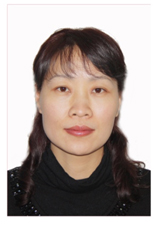Effect of Extracellular Polymeric Substances (EPS) on Anti-corrosion Behavior of Metals

摘 要
微生物胞外聚合物(EPS)对金属腐蚀具有抑制作用,研究了EPS中的主要成分蛋白质和多糖对碳钢、铸铁、黄铜和304不锈钢腐蚀速率的影响,并以此为基础,开展了蛋白质、多糖抑制碳钢腐蚀的单因素试验以及正交试验。结果表明: 单因素作用下,蛋白质或多糖的质量浓度为1.0 mg/mL时,碳钢的腐蚀速率最低;多因素作用下,多糖加入量为0.7 mg/mL、蛋白质加入量为0.7mg/mL、浸涂时间为36 h时,碳钢的腐蚀抑制效果最佳。研究结果可以为金属防护领域研发新型防腐蚀涂料提供技术支持。
 蛋白质
蛋白质  多糖
多糖  碳钢
碳钢  腐蚀抑制
腐蚀抑制  extracellular polymeric substances (EPS)
extracellular polymeric substances (EPS)  protein
protein  polysaccharide
polysaccharide  carbon steel
carbon steel  corrosion inhibition
corrosion inhibition 
Abstract
EPS can inhibit the corrosion of metals. The effects of protein and polysaccharide, the main components of EPS, on corrosion rates of carbon steel, cast iron, brass and 304 stainless steel were investigated. Single factor test and orthogonal test were used to investigate the corrosion resistance behavior of protein and polysaccharide. The results showed that under the condition of single factor, carbon steel had the lowest corrosion rate when the concentration of protein or polysaccharide was 1.0 mg/mL. And under orthogoral conditions, the best inhibition effect was obtained when polysaccharide was 0.7 mg/mL, protein was 0.7 mg/mL and dip-coating time was 36 h. The results could provide technical support for new anticorrosive coating investigating.
中图分类号 TG174.4 DOI 10.11973/fsyfh-201605008
所属栏目 试验研究
基金项目 国家自然科学基金(51278026, 51578035); 北京建筑大学基金项目(00331615008); 城市雨水系统与水环境省部共建教育重点实验室项目(PXM2014014210000057)
收稿日期 2015/7/23
修改稿日期
网络出版日期
作者单位点击查看
备注张雅君(1965-),教授,博士,从事再生水管网腐蚀及控制研究,
引用该论文: XU Ping,SI Shuai,ZHANG Ya-jun,ZHAI Yu-jia,WEI Zhi-gang. Effect of Extracellular Polymeric Substances (EPS) on Anti-corrosion Behavior of Metals[J]. Corrosion & Protection, 2016, 37(5): 384
共有人对该论文发表了看法,其中:
人认为该论文很差
人认为该论文较差
人认为该论文一般
人认为该论文较好
人认为该论文很好






参考文献
【1】耿耀宗. 现代水性涂料[M]. 北京: 中国石化出版社,2003: 1-2.
【2】周立新. 环氧树脂的相反转乳化与水性环氧树脂防腐涂料的研究[D]. 广州: 华南理工大学,2004.
【3】柯伟. 中国工业与自然环境腐蚀调查的进展[J]. 腐蚀与防护,2004,25(1): 1-8.
【4】FLEMMING H C,WINGENDER J. The biofilm matrix[J]. Nature Reviews Microbiology,2010,8(9): 623-633.
【5】URBAIN V,BLOCK J C,MANEM J. Bioflocculation in activated sludge: an analytic approach[J]. Water Research,1993,27(93): 829-838.
【6】KEIDING K,NIELSEN P H. Desorption of organic macromolecules from activated sludge: effect of ionic composition[J]. Water Research,1997,31(7): 1665-1672.
【7】LIU H,FANG H H P. Extraction of extracellular polymeric substances (EPS) of sludges[J]. Journal of Biotechnology,2002,95(3): 249-256.
【8】JIN J,WU G,ZHANG Z,et al. Effect of extracellular polymeric substances on corrosion of cast iron in the reclaimed waste water[J]. Bioresource Technology,2014,165(8): 162-165.
【9】SYRETT B C,ARPS P J,EARTHMAN J C,et al. 2001.Corrosion control using regenerative biofilms (CCURB): an update[J]. Metallurgia Italiana,2001,93(7/8): 39-44.
【10】SAND W,HARNEIT K,GROOTERS M,et al. Novel steel corrosion protection by microbial extracellular polymeric substances (EPS)-Biofilm-Induced corrosion inhibition[J]. Advanced Materials Research,2007(20/21): 375-378.
【11】STADLER R,WEI L,FRBETH W,et al. Influence of bacterial exopolymers on cell adhesion of desulfovibrio vulgaris on high alloyed steel: corrosion inhibition by extracellular polymeric substances (EPS)[J]. Materials & Corrosion,2010,61(12): 1008-1016.
【12】FINKENSTADT V L,COOT G L,WILLETT J L. Corrosion protection of low-carbon steel using exopolysaccharide coatings from leuconostoc mesenteroides[J]. Biotechnology Letters,2011,33(6): 1093-1100.
【13】DONG Z H,LIU T,LIU H F. Influence of EPS isolated from thermophilic sulphate-reducing bacteria on carbon steel corrosion[J]. Biofouling the Journal of Bioadhesion & Biofilm Research,2011,27(5): 487-495.
【14】李云雁. 试验设计与数据处理[M]. 2版.北京: 化学工业出版社,2008.
【15】JUZELIUNAS E,RAMANAUSKAS R. Influence of wild strain bacillus mycoides on metals: from corrosion acceleration to environmentally friendly protection[J]. Electrochimi Acta,2006(51): 6085-6090.
【16】STADLER R,FUERBETH W,HARNEI T. First evaluation of the applicability of microbial extracellular polymeric substances for corrosion protection of metal substrates[J]. Electrochim Acta,2008(54): 91-99.
【17】张静. 再生水中弗氏柠檬酸杆菌对铜合金的腐蚀机理研究[D]. 北京: 北京交通大学,2011.
【18】陈忻,袁毅桦,陈晓刚,等. 壳聚糖对痕量重金属离子铅、铬、镍的吸附研究[J]. 广东化工,2007(5): 32-34.
【19】GHAFARI M D,BAHRAMI A,RASOOLI I,et al. Bacterial exopolymeric inhibition of carbon steel corrosion[J]. International Biodeterioration & Biodegradation,2013,80(5): 29-33.
【20】SCHEERDER J,BREUR R,SLAGHEK T,et al. Exopolysaccharides (EPS) as anti-corrosive additives for coatings[J]. Progress in Organic Coatings,2012,75(3): 224-230.
【21】ROUX S,BUR N,FERRARI G,et al. Influence of a biopolymer admixture on corrosion behaviour of steel rebars in concrete[J]. Materials & Corrosion,2010,61(12): 1026-1033.
【22】王佳,曹楚南. 缓蚀剂阳极脱附的研究Ⅱ. 缓蚀剂阳极脱附对电极阻抗的影响[J]. 中国腐蚀与防护学报,1995,15(4): 247-253.
【2】周立新. 环氧树脂的相反转乳化与水性环氧树脂防腐涂料的研究[D]. 广州: 华南理工大学,2004.
【3】柯伟. 中国工业与自然环境腐蚀调查的进展[J]. 腐蚀与防护,2004,25(1): 1-8.
【4】FLEMMING H C,WINGENDER J. The biofilm matrix[J]. Nature Reviews Microbiology,2010,8(9): 623-633.
【5】URBAIN V,BLOCK J C,MANEM J. Bioflocculation in activated sludge: an analytic approach[J]. Water Research,1993,27(93): 829-838.
【6】KEIDING K,NIELSEN P H. Desorption of organic macromolecules from activated sludge: effect of ionic composition[J]. Water Research,1997,31(7): 1665-1672.
【7】LIU H,FANG H H P. Extraction of extracellular polymeric substances (EPS) of sludges[J]. Journal of Biotechnology,2002,95(3): 249-256.
【8】JIN J,WU G,ZHANG Z,et al. Effect of extracellular polymeric substances on corrosion of cast iron in the reclaimed waste water[J]. Bioresource Technology,2014,165(8): 162-165.
【9】SYRETT B C,ARPS P J,EARTHMAN J C,et al. 2001.Corrosion control using regenerative biofilms (CCURB): an update[J]. Metallurgia Italiana,2001,93(7/8): 39-44.
【10】SAND W,HARNEIT K,GROOTERS M,et al. Novel steel corrosion protection by microbial extracellular polymeric substances (EPS)-Biofilm-Induced corrosion inhibition[J]. Advanced Materials Research,2007(20/21): 375-378.
【11】STADLER R,WEI L,FRBETH W,et al. Influence of bacterial exopolymers on cell adhesion of desulfovibrio vulgaris on high alloyed steel: corrosion inhibition by extracellular polymeric substances (EPS)[J]. Materials & Corrosion,2010,61(12): 1008-1016.
【12】FINKENSTADT V L,COOT G L,WILLETT J L. Corrosion protection of low-carbon steel using exopolysaccharide coatings from leuconostoc mesenteroides[J]. Biotechnology Letters,2011,33(6): 1093-1100.
【13】DONG Z H,LIU T,LIU H F. Influence of EPS isolated from thermophilic sulphate-reducing bacteria on carbon steel corrosion[J]. Biofouling the Journal of Bioadhesion & Biofilm Research,2011,27(5): 487-495.
【14】李云雁. 试验设计与数据处理[M]. 2版.北京: 化学工业出版社,2008.
【15】JUZELIUNAS E,RAMANAUSKAS R. Influence of wild strain bacillus mycoides on metals: from corrosion acceleration to environmentally friendly protection[J]. Electrochimi Acta,2006(51): 6085-6090.
【16】STADLER R,FUERBETH W,HARNEI T. First evaluation of the applicability of microbial extracellular polymeric substances for corrosion protection of metal substrates[J]. Electrochim Acta,2008(54): 91-99.
【17】张静. 再生水中弗氏柠檬酸杆菌对铜合金的腐蚀机理研究[D]. 北京: 北京交通大学,2011.
【18】陈忻,袁毅桦,陈晓刚,等. 壳聚糖对痕量重金属离子铅、铬、镍的吸附研究[J]. 广东化工,2007(5): 32-34.
【19】GHAFARI M D,BAHRAMI A,RASOOLI I,et al. Bacterial exopolymeric inhibition of carbon steel corrosion[J]. International Biodeterioration & Biodegradation,2013,80(5): 29-33.
【20】SCHEERDER J,BREUR R,SLAGHEK T,et al. Exopolysaccharides (EPS) as anti-corrosive additives for coatings[J]. Progress in Organic Coatings,2012,75(3): 224-230.
【21】ROUX S,BUR N,FERRARI G,et al. Influence of a biopolymer admixture on corrosion behaviour of steel rebars in concrete[J]. Materials & Corrosion,2010,61(12): 1026-1033.
【22】王佳,曹楚南. 缓蚀剂阳极脱附的研究Ⅱ. 缓蚀剂阳极脱附对电极阻抗的影响[J]. 中国腐蚀与防护学报,1995,15(4): 247-253.
相关信息
























